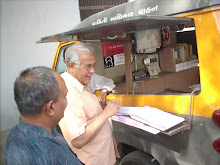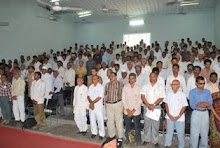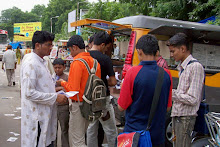The Tribune:
Punjab: Monday, 02 March 2020.
IN
October 2018, while interacting with a group of farmers and students at
Chandigarh’s Kisan Bhawan, renowned rural affairs expert P Sainath said Pradhan
Mantri Fasal Bima Yojana (PMFBY) was ‘not fasal but a rascal yojana’.
Citing
examples from crisis-ridden districts of Maharashtra, he explained how the
finance capital had waged a war on the peasantry of the country. It was good,
he said, that Punjab’s farmers were still enjoying freedom as the ‘rascal deal’
was not being implemented in the state.
Many
raised doubts over Sainath’s claims, but soon his words proved right when The
Tribune, based on information obtained under the RTI Act by Haryana-based PP
Kapoor, broke the story that insurance companies had made over Rs 15,795 crore
profit from the PMFBY in just two years. The biggest beneficiaries were 13
(private) of the total 18 companies which got contracts under the crop
insurance scheme.
Punjab’s
argument for opting out of this scheme during the SAD-BJP rule in 2016 was high
premium and the way an entire village was considered the basic unit instead of
the individual farmer. The government was of the view that when farmers were
already in crisis, they won’t be able to pay the high premium. Farmer
organisations from Punjab refused to pay any premium. “Farmers are even unable
to pay water and electricity bills, how can they pay such a high premium to the
insurance companies?” says Balbir Singh Rajewal, president of a faction of the
BKU. He was part of various meetings with the government regarding the
implementation of the scheme in the state. The annual premium worked out to be
Rs 1,250 for one acre of wheat and paddy, around Rs 5,000 (sugarcane) and about
Rs 2,000 (cotton).
According
to economists, the scheme was not in Punjab’s interests. “Punjab’s area is just
1.45 per cent of the total geographical area of the country, but it contributes
32 per cent wheat to the Central pool and is number three when it comes to
paddy contribution. So, it is the Centre’s duty to bear the losses and pay
premium to the companies as Punjab is overexploiting its natural resources for
national food security,” says Gian Singh, an economist.
Sainath
reveals the design behind the scheme: “First, the government demolished every
system required to assess agrarian crisis: from rainfall measurement to crop
insurance; from water distribution to crop damage assessment, everything is
being privatised. Now they have replaced village-level assessment with
tehsil-level assessment and the work has been given to a private company, which
terribly failed in Maharashtra.”
“When
you have demolished all existing tools to assess crop damage, how can you tell
how much is the damage? It all suits insurance companies,” says Sainath.
Not
just making high profits, the companies also did not pay complete claims to the
farmers. “Insurance companies made thousands of crores of rupees, but failed to
pay claims worth over Rs 2,800 crore to farmers in the same period,” says
Ropar-based RTI activist Dinesh Chadha, who found that the estimated loss of crops
of 3.01 crore farmers was to the tune of Rs 16,448 crore in 2016-17, but the
firms approved Rs 16,242 crore for payment. “Eventually, they paid Rs 15,902
crore Rs 546 crore less than the estimated crop loss of farmers,” he adds.
The
scheme, he says, was tailor-made for insurance firms. “Now, the government has
amended the scheme, but what about the thousands of crores of rupees pocketed
by the companies?” asks Chadha.














































































